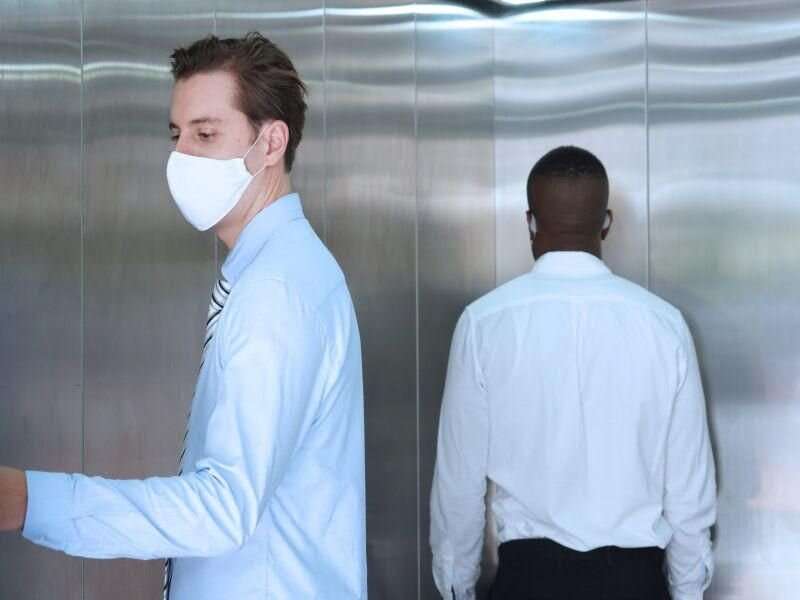
As the new coronavirus vaccine rollout gathers speed, elevators will likely become a flash point for businesses hoping to reopen offices while sticking to social distancing.
And a new computer simulation suggests that the usual “first-come, first-served” elevator routine is neither safe nor practical.
“Now that vaccines are within reach, many buildings are slated for phased re-openings,” said study lead author Sai Mali Ananthanarayanan, a doctoral student in industrial engineering and operations research at Columbia University in New York City.
The problem is that physical distancing reduces the capacity of elevators in high-rise buildings, causing crowds and long wait times.
“If buildings reopen fully with the usual amount of foot traffic, the length of queues in the lobby during rush hour will explode, which can be unsafe, posing a public health risk,” he warned.
To address the concern, Ananthanarayanan’s team conducted computer simulations based on elevator usage data provided by the New York City Mayor’s Office. As outlined in a new paper from the Columbia University School of Engineering, the research was based on an existing 25-story building in New York City. The report has not yet been peer-reviewed.
Before the pandemic, more than 5,500 people typically used the elevators during the 8 a.m. to 10 a.m. rush.
While the building has two banks of elevators, the team focused on the “South bank,” with 14 elevators that serve about 2,750 people.
Maintaining a 6-foot space between individuals would mean that each elevator could safely transport only two passengers at a time. But letting four passengers ride at a time would slash lobby waiting time by 600%. So that protocol became the basis for further calculations.
The team then projected traffic flow based on three options: first-come, first-served; grouping passengers together by the destination floor of the first person in line (“cohorting”); and creating different lines for different floor destinations (“queue splitting”).
Option 1 is the typical pre-pandemic “polite” protocol: Whoever gets to the elevator first gets in first.
In Option 2, “we ask if anyone in the queue is going to the same floor as the first passenger in order to create a cohort going to the same floor,” said co-author Yeqinq Zhou, a fellow Columbia doctoral candidate. “After this cohort boards the elevator, we repeat this until the elevator is full or the queue is empty.”
In Option 3, arriving passengers join a line corresponding to their floor and these queues are processed in round-robin order, Zhou said.
Using the “cohort” model resulted in passenger wait times that were just one-tenth of those in a first-come, first-served system, Zhou said. “Queue splitting” also shortened wait time significantly, preventing crowding in lobbies and entrances.
The simulations are now being offered as open-source guidance to anyone interested. The research team stressed that its simulations can be adapted to any building of any size.
Ananthanarayanan noted that “elevators are a necessity for those working in or visiting high-rise buildings. And our research shows there is math in elevator safety. And significant benefits can be achieved with simple interventions, and ease a public health quandary.”
Elizabeth Scott is associate dean and professor at Simmons University’s College of Natural, Behavioral and Health Sciences, in Boston. She reviewed the study findings.
Scott said any return to a communal workplace will likely require a host of behavioral and technological considerations and adaptations, as the elevator modeling suggests.
The former will be centered on the shared responsibilities to wear masks and practice hand hygiene, she said. The latter will also involve an array of “smart, targeted approaches,” including no-touch entries and exits, no-touch technology, smart bio-inhibiting/killing surfaces, and improved air-flow and ventilation systems.
Source: Read Full Article
